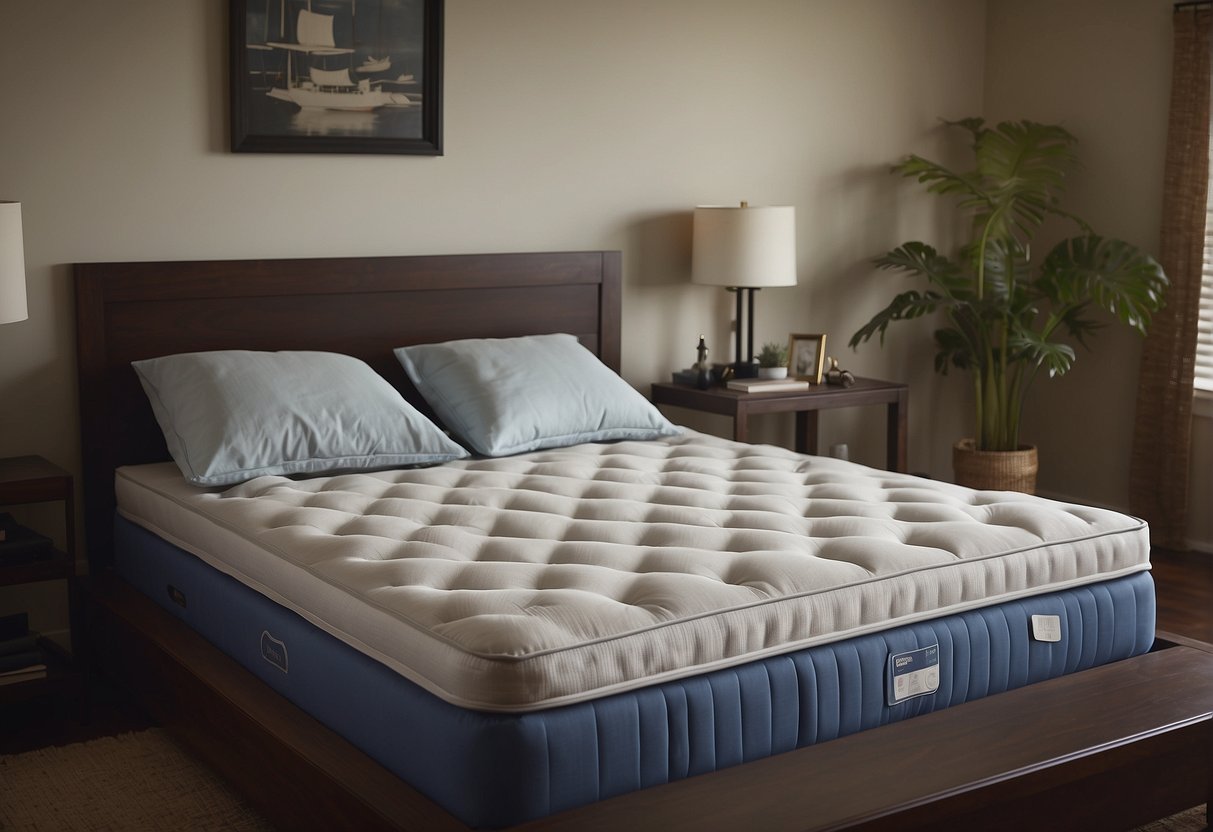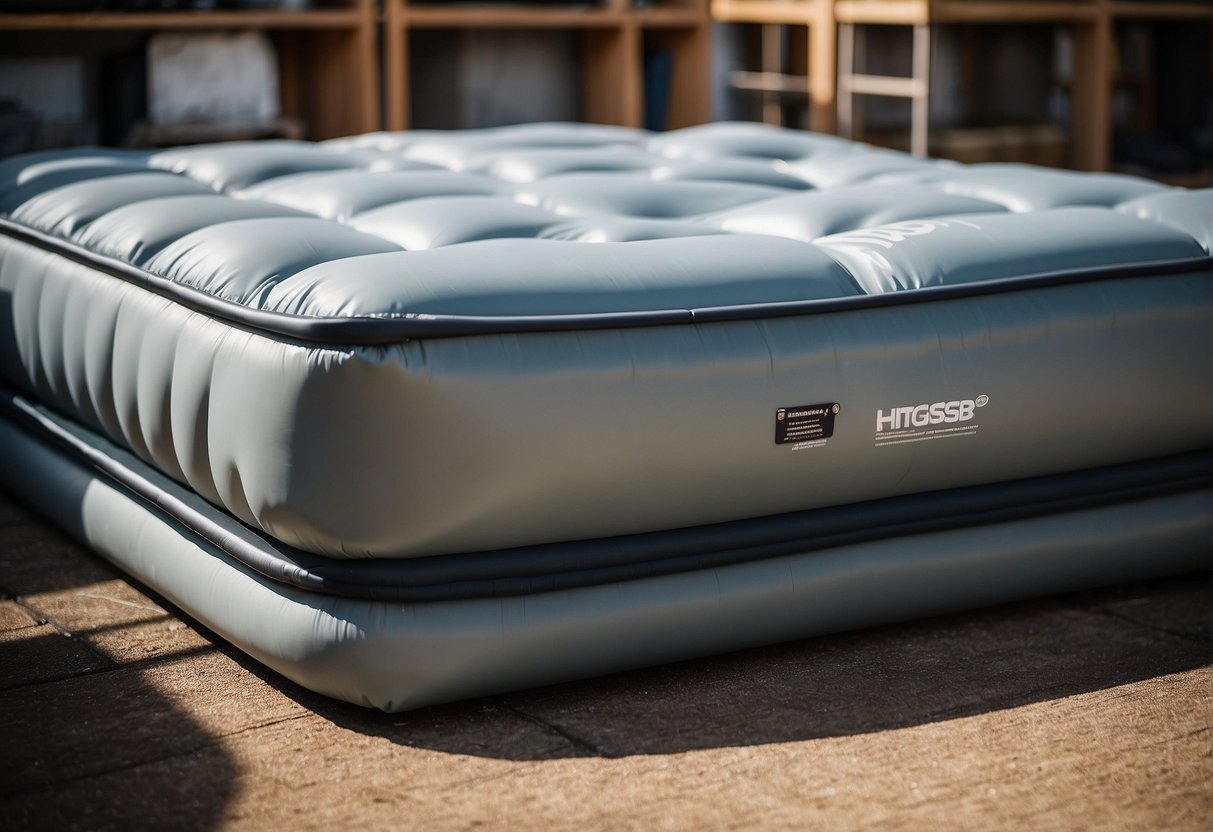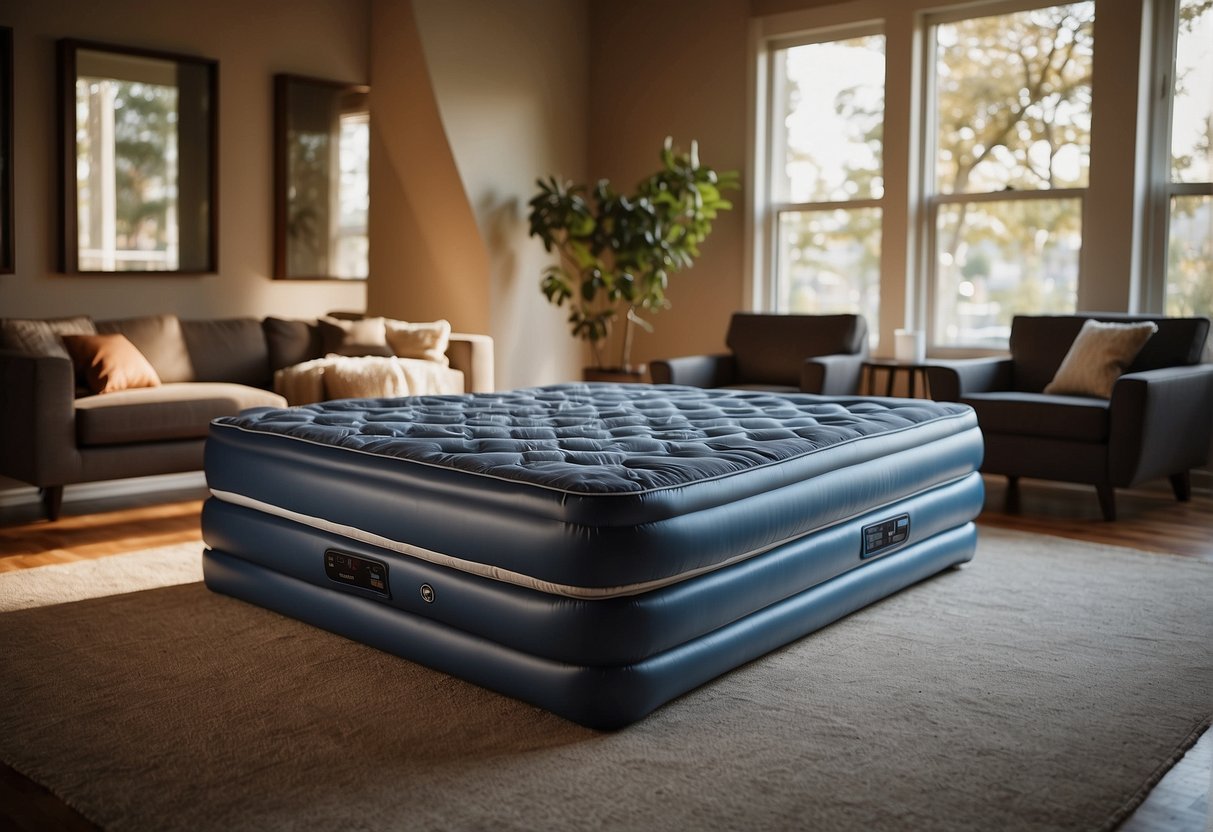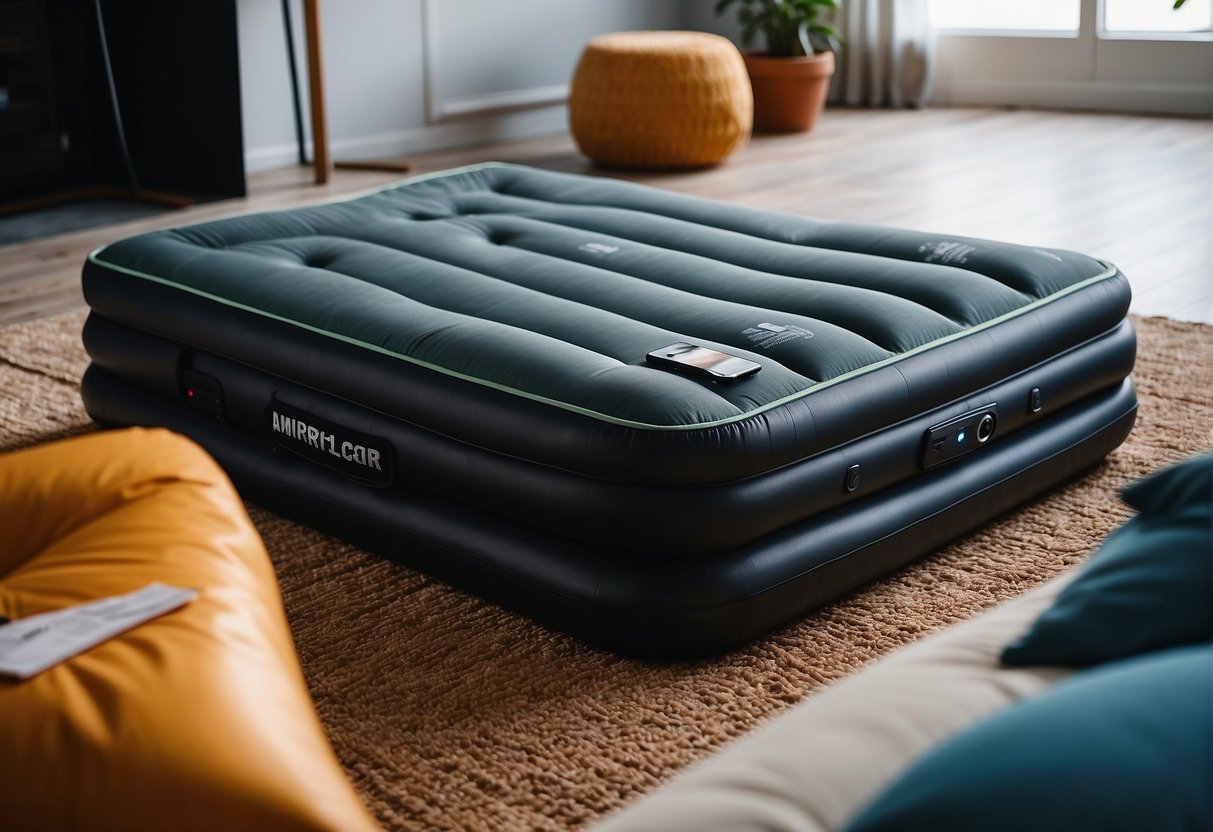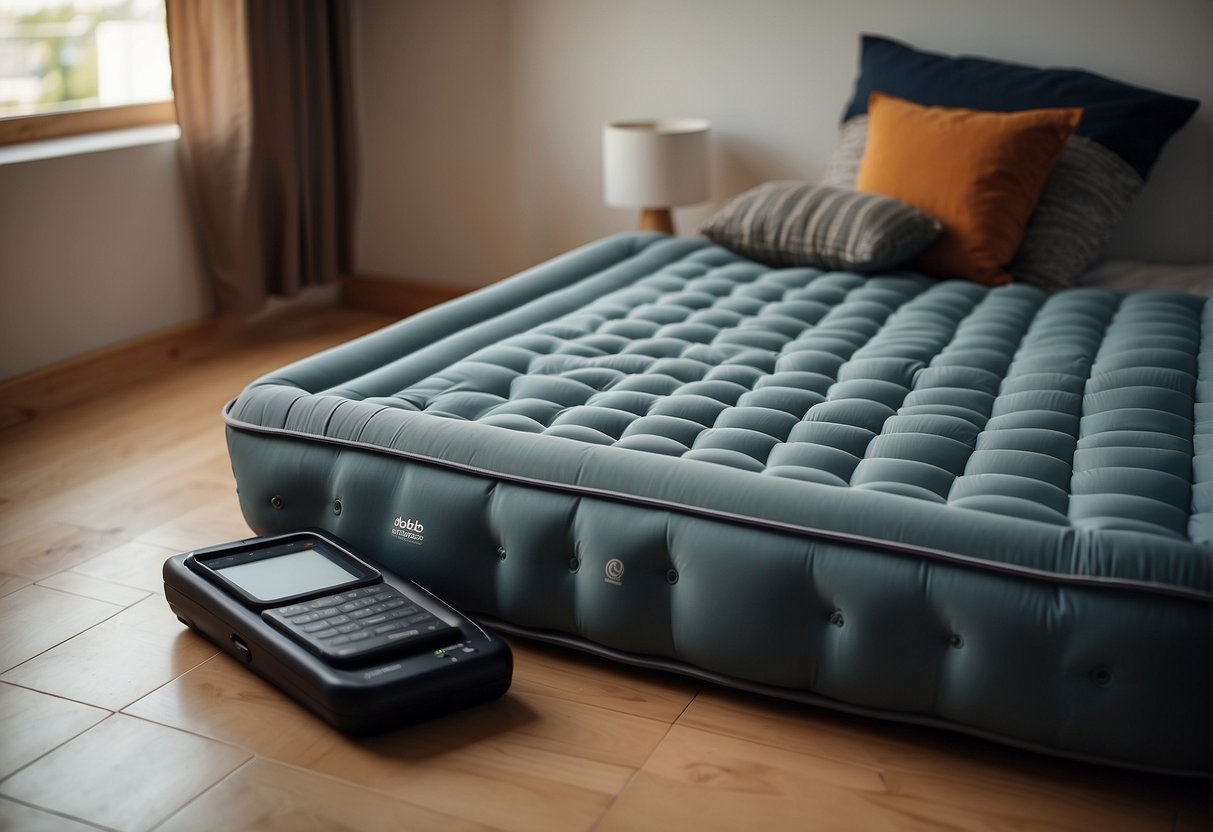Choosing the right air mattress can significantly elevate your sleeping comfort, whether you’re camping under the stars, accommodating guests, or seeking a temporary bedding solution. Air mattresses come in various sizes, designs, and with a multitude of features, making the selection process more complex than initially anticipated. As such, understanding the fundamental differences between air mattress types and the key features can help guide your decision to ensure you secure a product that meets your specific needs.
From single-height options for occasional use to double-height models that mimic traditional beds, air mattresses cater to a wide audience. When considering a purchase, one must evaluate the ease of inflation and deflation, the convenience of portability and storage, and the intended use, which could range from outdoor camping to indoor use. Attention should also be paid to the mattress’s durability, including its ability to resist and be repaired from punctures or wear over time.
Health and comfort considerations are paramount when selecting an air mattress, as these factors directly affect sleep quality. A good mattress should support the body uniformly and not lead to any discomfort or back pain. Balancing your budget with the desired features and the latest advancements in air mattress technology will ultimately lead to a well-informed purchase, answering common questions and ensuring a good night’s rest.
Key Takeaways
- Selecting an appropriate air mattress requires considering its size, features, and intended use.
- Durability, ease of maintenance, and comfort level are critical in determining the right choice.
- Balancing cost with advanced features and material quality ensures a value-for-money purchase.
Understanding Air Mattress Types and Sizes
Choosing the right air mattress involves considering various types and sizes to best fit individual needs and space constraints.
Single vs Twin vs Queen vs King
Air mattresses come in standard mattress sizes including single, twin, queen, and king. A single air mattress is ideal for one sleeper with limited space, measuring approximately 30 inches wide. The twin size is slightly larger at around 38 inches wide. For couples or those desiring more space, queen air mattresses offer a width of about 60 inches, while king sizes provide an ample 76 inches of width.
Single-Height vs Double-Height Air Mattresses
Air mattresses can be categorized by their height. Single-height air mattresses are generally 7 to 10 inches high, offering a ground-like sleeping experience ideal for camping. Double-height air mattresses, also called raised or high-rise, mimic traditional bed height at about 18 to 22 inches and provide easier access and a more bed-like feel.
Specialty Sizes and Convertible Options
Aside from the conventional sizes, some air mattresses come in specialty sizes or offer convertible designs. These may include full sizes, which are a step up from twin, or unique dimensions tailored for specific space or storage requirements. Convertible air mattresses can transform from a single to a double, or even to a lounge or sofa configuration, providing versatile use for different situations.
Key Features to Consider
When selecting an air mattress, it’s crucial to assess certain features that can significantly affect its performance and longevity. The material and its durability, comfort level, and user convenience should be the primary focus areas.
Material and Durability
Air mattresses are commonly made from PVC (polyvinyl chloride), which offers a good balance of durability and flexibility. Quality is paramount as it determines the lifespan of the mattress. Look for options that have a thick, puncture-resistant PVC layer, which ensures the mattress can withstand regular usage and the occasional stress of different weight loads.
- Puncture Resistance: High-quality PVC material
- Thickness: Gauge of PVC should indicate robustness
Comfort and Support
The comfort of an air mattress is determined by its internal structure and the ability to maintain a firm level of support throughout the night. A mattress with a coiled or chambered design can provide a more supportive and comfortable sleep surface. Some models come with a flocked top that not only feels plush but also helps keep bedding in place.
- Internal Structure: Coiled or chambered designs
- Surface: Flocked tops for added comfort
Ease of Use and Convenience
For ease of use, air mattresses with a built-in pump are highly convenient as they allow for quick inflation and deflation. This feature eliminates the need for external pumping equipment and manual labor. An air mattress should also be lightweight and compact when deflated for easy storage and transport.
- Built-in Pump: For quick and effortless inflation
- Portability: Lightweight and easy to store when not in use
Inflation and Deflation Mechanisms
Choosing the right air mattress involves understanding the different types of inflation and deflation mechanisms available. These systems affect how easy it is to set up and pack away the air mattress.
Built-In vs External Pumps
Built-in pumps are integrated within the mattress and offer convenience, as one does not need a separate tool to inflate or deflate the mattress. They usually require an electric source to operate. On the other hand, external pumps need to be attached to the mattress each time one wants to inflate or deflate it. They can be electric or manual and are often preferable for camping when electricity may not be available.
Electric vs Manual Pumps
Electric pumps can be either built into the mattress or external. They provide a quick and effortless way to inflate or deflate an air mattress. Electric pumps require access to a power source, which may be AC, DC, or battery-powered.
- AC electric pumps: Fast and efficient; require a wall outlet.
- DC electric pumps: Can be used with a car outlet; suitable for camping.
- Battery-powered pumps: Offer portability but may have less power.
Manual pumps require physical effort to operate but give users full control over the inflation process. They are usually lightweight and do not rely on a power source. Manual pumps include:
- Foot pumps: Activated by stepping repeatedly on a bellows mechanism.
- Hand pumps: Require a hand-pumping action to inflate.
Inflation and Deflation Times
The time it takes to inflate or deflate an air mattress varies widely depending on the pump type and mattress size. Generally, electric pumps inflate a mattress in a matter of minutes, although larger mattresses may require more time. Deflation times can also differ, with some built-in electric pumps equipped with a deflation option to speed up the process. Here is an example of approximate inflation times for a queen-size air mattress:
- Built-in electric pump: 3-4 minutes to inflate.
- External electric pump: 3-5 minutes to inflate.
- Manual pump: 10-15 minutes to inflate, depending on the effort exerted.
Portability and Storage
When selecting an air mattress, consideration of its portability and storage ease is crucial. These factors affect the usability and convenience of the mattress, especially for those with limited space or frequent mobility needs.
Storage Solutions
Air mattresses offer a variety of storage solutions to fit different spaces and needs. Storage bags often accompany portable air mattresses, making them easy to store and protect from damage when not in use. Many mattresses are designed to quickly deflate and fold into a compact shape that fits snugly inside their storage bag. Consumers should look for a storage system that is simple to use and fits their space constraints. They should consider if the air mattress can slide under a bed, fit in a closet, or be hung on a wall rack when choosing an air mattress with suitable storage solutions.
Mattress Weight and Compactness
The weight and compactness of an air mattress are vital for easy transportation and storage. A lighter mattress is preferable for those who plan to use the mattress for outdoor activities like camping, as it reduces the effort needed to carry it. However, more robust materials might add weight but offer better durability. Compactness is achieved when the mattress is deflated; a mattress should fold down to a size that is manageable and in line with the user’s available storage space. Below is a summary of key considerations for mattress weight and compactness:
- Weight: Light enough for easy carrying but balanced with material durability.
- Folded Size: The dimensions of the mattress once fully deflated and folded.
- Ease of Packing: The mattress should deflate quickly and fold without difficulty.
- Storage Footprint: The mattress, when packed, should occupy minimal space, fitting comfortably within designated storage areas.
Camping with Air Mattresses
When selecting an air mattress for camping, one needs to consider the durability of materials and the specific requirements of outdoor use.
Outdoor-Suitable Materials
The ideal air mattress for camping should be constructed from heavy-duty, puncture-resistant fabric. This ensures it can withstand the harsh conditions often encountered in outdoor environments. A popular material is reinforced PVC which offers both strength and waterproof qualities.
Additional Camping Considerations
For additional comfort, some campers might opt for a mattress topper, which provides extra padding and insulation against the cold ground. Other critical considerations include:
- Portability: A mattress that is lightweight and compact when folded is ideal for camping, as it doesn’t overburden the camper.
- Inflation Method: A built-in pump or a battery-operated pump is preferred in the absence of electricity.
- Size: The mattress should fit comfortably inside the tent while leaving room for movement and other gear.
- Insulation: During colder nights, the mattress should provide adequate insulation. Some models feature an insulating layer or are designed to retain heat.
Using Air Mattresses for Guests
When accommodating overnight guests, an air mattress can offer a flexible and comfortable sleeping solution. It’s crucial to consider the setup, the quality of temporary bedding, and additional comfort features to ensure a good night’s sleep for your guests.
Guest Room Setup
Creating a welcoming guest room necessitates a thoughtful approach to the space available. For households without a dedicated guest room, a raised air mattress provides a bed-like experience and is easier to get in and out of compared to a low-profile mattress. The King Koil Luxury Air Mattress is a popular choice, offering a built-in pump for easy inflation and a durable coil-beam construction for support. Arrange the air mattress in a spacious area of the room to prevent the space from feeling cramped, ensuring guests have room for their personal items.
Temporary Bedding Solutions
An air mattress should be seen as more than a convenience; it can be a genuinely comfortable temporary bed. Choose a mattress that can accommodate the size and space needs of your guests. For couples or those desiring more space, a king-size air mattress is suitable, while a twin-size may suffice for single guests. Provide blankets and pillows that match the quality and comfort level of traditional bedding, to enhance the sleeping experience and add a touch of homeliness.
Comfort Enhancements
Comfort on an air mattress is paramount for a restful night’s sleep and can be achieved through several enhancements. Add a mattress topper or a plush mattress pad to mimic the comfort of a traditional mattress. Luxury options, such as the King Koil Luxury Air Mattress, often come with a soft flocking layer on top for additional comfort. Equipping the air mattress with high-quality bed linen and extra blankets allows guests to adjust for their warmth and comfort preferences. Choose breathable materials to prevent overheating and ensure a restful environment for your guests.
Preventing and Repairing Damage
An air mattress’s durability depends on its ability to resist and repair damage. Focusing on the right materials and proper maintenance can significantly extend the lifespan of the air mattress.
Materials Prone to Puncture
When selecting an air mattress, one should consider the materials used in its construction. The most common material for air mattresses is polyvinyl chloride (PVC), which balances flexibility with resistance to punctures. Higher gauge PVC indicates thicker material, which generally equates to increased durability. Some air mattresses may also feature reinforcements like textile-backed surfaces to prevent punctures.
- PVC Gauge: Thicker PVC corresponds to a higher gauge number.
Gauge Puncture Resistance Recommended Use Thin (<0.4 mm) Low Indoor, infrequent use Medium (0.4–0.6 mm) Moderate Regular use or outdoor Thick (>0.6 mm) High Frequent, outdoor, or rough terrain
Maintenance and Repair Kits
Maintaining an air mattress involves regular inspections for signs of wear and timely repairs. Many manufacturers provide a repair kit that typically includes patches and adhesive, which are essential for fixing punctures. Proper usage of these kits can seal small holes effectively and restore the mattress to its full functionality.
- Repair Kit Contents:
- Patches: Various sizes to cover the damaged area.
- Adhesive: To secure the patch onto the mattress surface.
Avoiding Common Issues
There are several practices to reduce the likelihood of damage to an air mattress:
- Place a protective layer between the mattress and the ground to avoid abrasions.
- Keep away from sharp objects and edges that may cause punctures.
- Avoid over-inflation, as it puts undue stress on seams and can lead to leaks.
- Limit exposure to extreme temperatures, which can weaken the PVC material.
Preventative measures not only prolong the lifespan of an air mattress but also ensure a better sleeping experience.
Health and Comfort Considerations
When selecting air mattresses, it is essential to consider their impact on health and comfort. A suitable mattress should support the spine while providing a comfortable sleep surface.
Mattress Firmness and Back Support
Air mattresses come with varying degrees of firmness that directly influence back support. One should look for products that feature ComfortCoil technology or similar structural design that helps in maintaining spine alignment. A firmer mattress can be beneficial for those needing extra back support, especially if they have back-related issues. Key factors include:
- The mattress should be sufficiently firm to support the natural curvature of the spine.
- Adjustable firmness levels can accommodate different sleep preferences.
Features for the Elderly or Disabled
Special considerations need to be made when choosing an air mattress for the elderly or individuals with disabilities. Important features to look for:
- Built-in pumps for easy inflation and deflation without physical strain.
- Raised edges to provide extra stability and prevent falls.
- Mattresses that are supportive enough to facilitate easy movement and to reduce the risk of pressure sores.
Selecting the correct air mattress with adequate firmness and supportive features significantly impacts the sleep quality and overall health for users, especially the elderly and those with physical disabilities.
Budgeting for Your Air Mattress
When choosing an air mattress, budget considerations play a pivotal role in balancing cost with comfort and durability. It’s crucial to evaluate how each purchase aligns with both financial constraints and quality expectations.
Price vs Quality
Consumers often encounter a trade-off between price and quality. Lower-cost air mattresses may suffice for occasional use but typically lack long-term durability and advanced features. On the other hand, higher-priced options tend to offer enhanced comfort, stability, and longevity. They often incorporate superior materials and technologies such as puncture-resistant layers and built-in pumps.
At a glance:
- Low-Range Mattresses:
- Price: Generally under $50
- Quality: Basic comfort, minimal features, lower durability
- Mid-Range Mattresses:
- Price: $50 to $100
- Quality: Better materials, more durability, some additional features
- High-End Mattresses:
- Price: Over $100
- Quality: Premium materials, robust construction, luxury features
Value for Money
In pursuit of value for money, shoppers should weigh the mattress’s intended use against the total investment. An air mattress for frequent use or as a primary bed should be of higher quality, suggesting a higher upfront cost but better long-term value. Conversely, a mattress for the occasional guest can be more economical, prioritizing lower costs.
Checklist for best value:
- Durability vs. Usage Frequency
- Comfort vs. Overnight Support
- Warranty and Customer Reviews
- Long-Term Cost Efficiency (e.g., replacement and repair costs)
Shoppers should remember that the “best air mattress” is not a one-size-fits-all term; it varies based on individual needs and budget.
Advanced Air Mattress Technologies
When selecting an air mattress, technology plays a crucial role. Two significant advancements in air mattress technology are state-of-the-art pump systems and innovative construction designs. These advancements ensure not only comfort but also convenience in use.
State-of-the-Art Pump Systems
Modern air mattresses incorporate advanced pump technologies for ease of inflation and deflation. The Serta Raised Air Mattress with Never Flat Pump utilizes a two-pump system. The primary pump inflates and deflates the mattress quickly, while the secondary Never Flat pump silently monitors and maintains air pressure throughout the night, ensuring the mattress remains firm.
- Pump Type:
- Primary Pump: Fast inflation/deflation
- Secondary Pump: Constant pressure maintenance
Another example is the SoundAsleep Dream Series Air Mattress, which features a patented ComfortCoil Technology with an integrated 1-click pump system for user-friendly operation.
- Technology Features:
- ComfortCoil Technology: Enhances support and comfort
- 1-Click Pump: Easy and rapid inflation
Innovative Construction and Designs
The construction material and design of an air mattress are pivotal for durability and comfort. Thermoplastic Polyurethane (TPU) is a kind of material often used in luxury air mattresses. It is notable for its durability, resistance to punctures, and capacity to retain shape.
- Material:
- Thermoplastic Polyurethane: Offers durability and comfort
Specialized designs like ComfortCoil Technology, which consists of multiple air coils, provide additional support and help distribute weight evenly across the mattress surface.
- Design Elements:
- Air Coils: Improve weight distribution and support
Luxury air mattresses are typically engineered to deliver a sleep experience that rivals traditional beds, thanks to these innovative technologies.
Frequently Asked Questions
When selecting the right air mattress, durability, inflation methods, use case, consumer ratings, comfort, support, and appropriate pressure levels are critical considerations. Each subsection addresses specific concerns to guide potential buyers.
What should be considered when looking for the most durable air mattress?
The durability of an air mattress hinges on materials and construction. A mattress made with thick, puncture-resistant material such as reinforced vinyl or textile-reinforced urethane will endure more wear. Additionally, seams and valves should be robust and well-constructed to prevent leaks.
What are the benefits of a self-inflating air mattress compared to a regular air mattress?
Self-inflating air mattresses provide convenience and save time and effort during setup. They often have a built-in pump that automatically inflates the mattress to a specified firmness. Compared to manual inflation, this makes them suitable for quick setups and eliminates the need for external pumps.
How does one decide on the best air mattress for camping purposes?
For camping, an air mattress should be lightweight, easily portable, and resistant to outdoor elements. One should consider mattresses with additional insulation for warmth and those that have a battery-powered or manual pump to be self-sufficient in the absence of electricity.
What are the key factors to look for in an air mattress according to Consumer Reports?
Consumer Reports often suggests checking for an air mattress with a flocked top to prevent slipping, a sturdy frame to prevent sagging, internal air coils or chambers for support, and a reliable warranty. Reviews for long-term use can indicate the mattress’s longevity.
In terms of comfort and support, how does mattress thickness impact sleeping quality on an air bed?
A thicker air mattress generally provides better body support and insulation from the ground. It also lessens the chance of bottoming out, making it closer in feel to a traditional mattress. However, thicker mattresses can be heavier and may require more air to inflate fully.
What are the recommended pressure levels for maintaining an air mattress, and how do you measure it?
Maintaining correct pressure ensures comfort and longevity; the mattress should be firm but not hard. Many air mattresses come with instructions on optimal pressure levels. Pressure is typically measured using a hand press test or, more accurately, with a pressure gauge if one is available.



